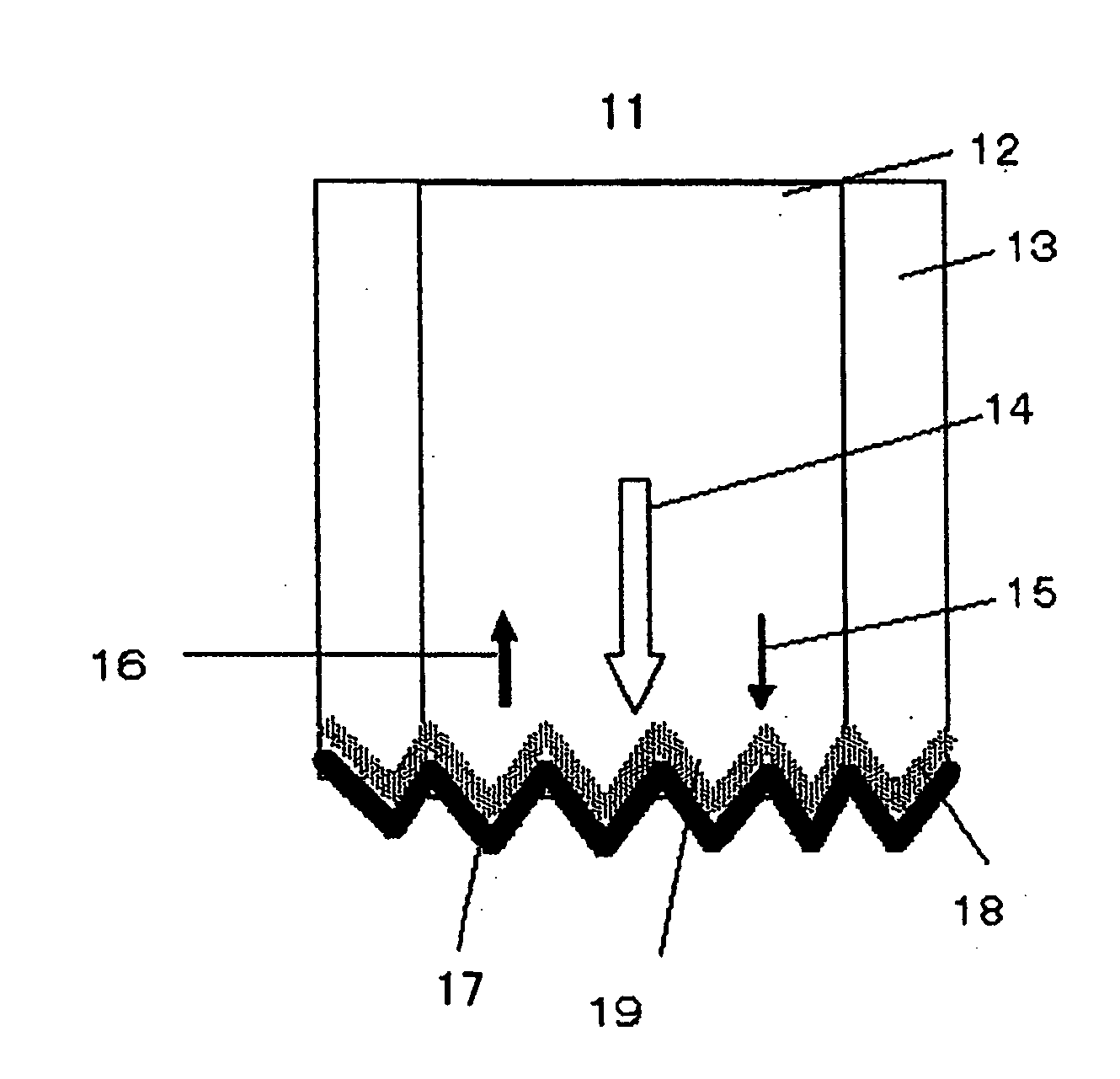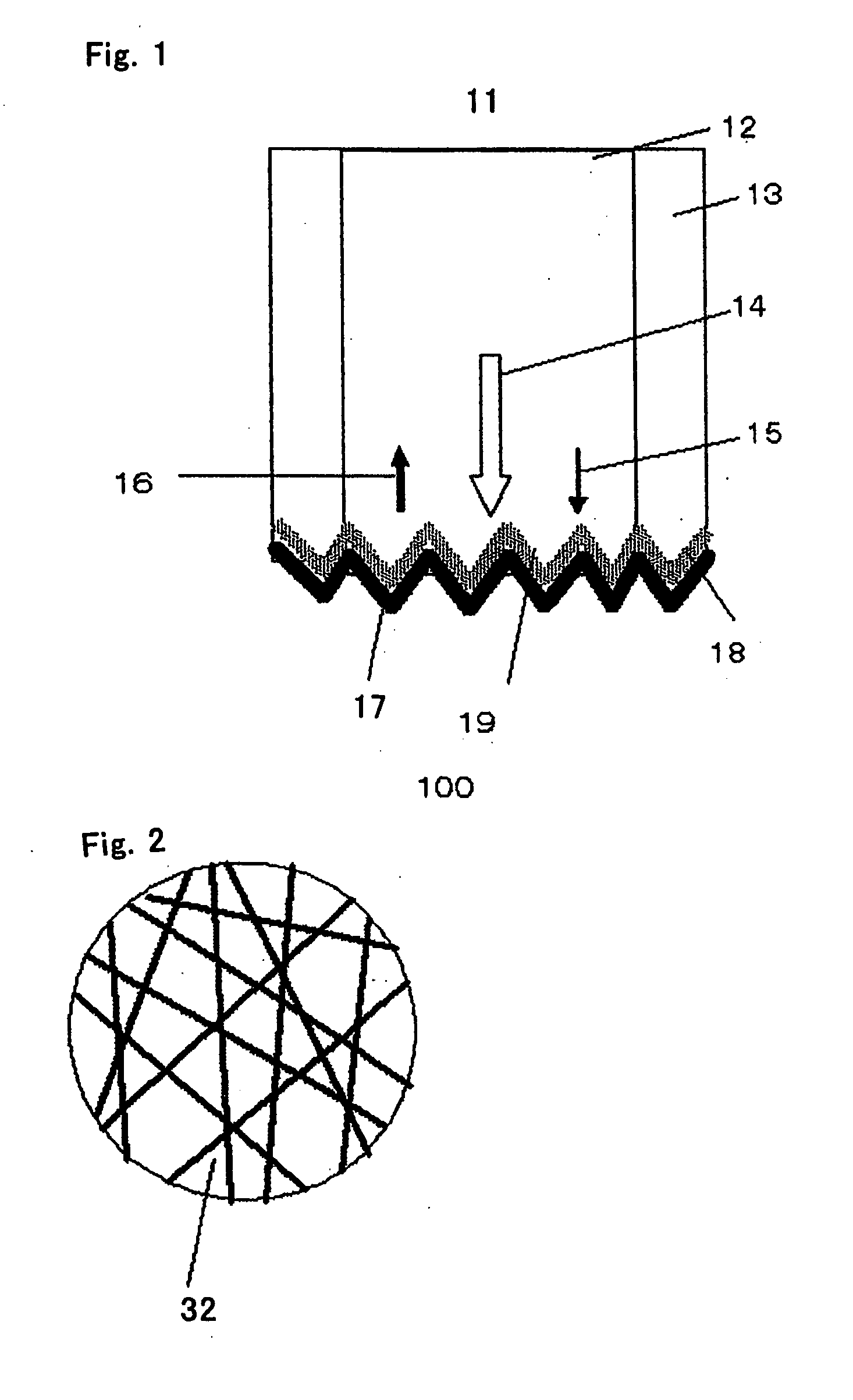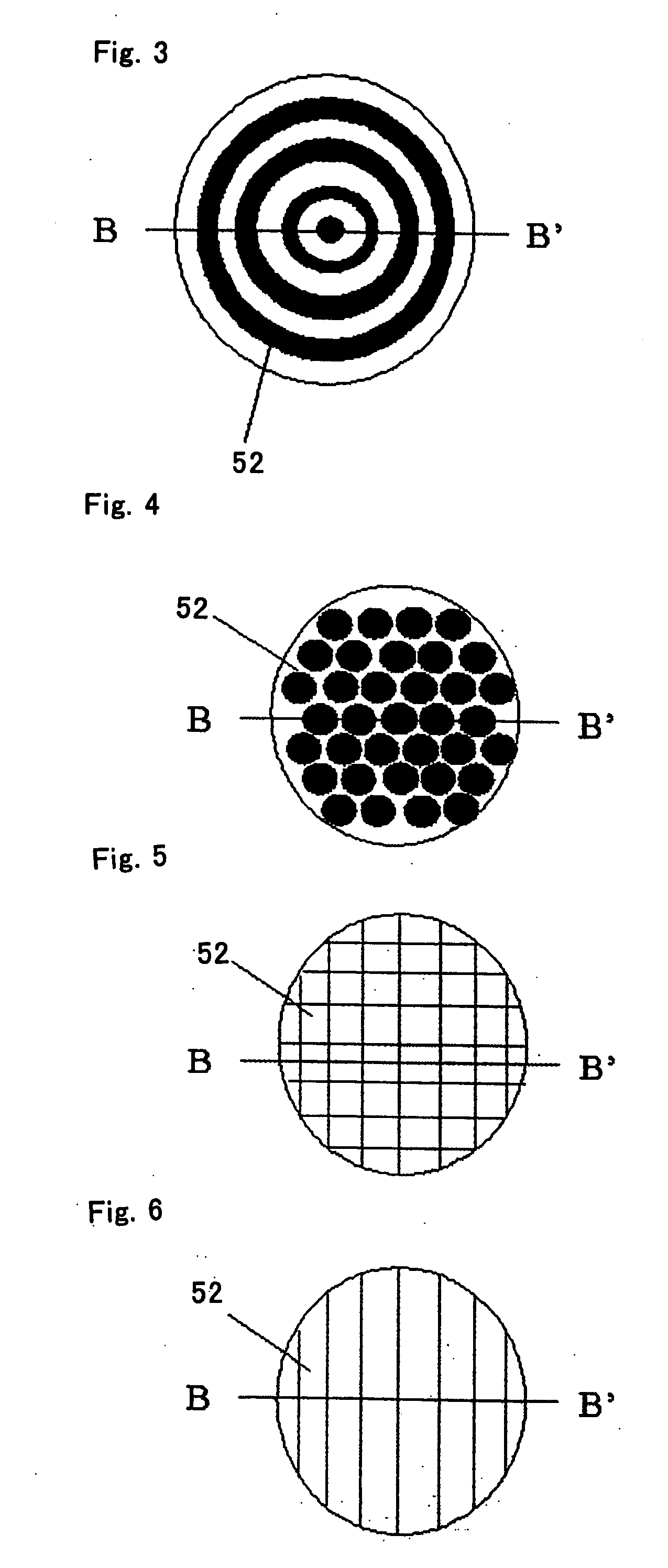Light amplification element, light amplification apparatus and light amplification system
a technology of light amplification and light amplification element, which is applied in the direction of optics, laser details, instruments, etc., can solve the problems of low raman amplification efficiency, increased size of amplification apparatus, and high output excitation light source, so as to enhance the stimulation of raman scattering, improve amplification efficiency, and efficient excite plasmon
- Summary
- Abstract
- Description
- Claims
- Application Information
AI Technical Summary
Benefits of technology
Problems solved by technology
Method used
Image
Examples
first embodiment
(Structure)
[0074]FIG. 1 shows the cross-sectional structure of a first embodiment of a light amplifier 100 of the present invention. According to FIG. 1, an end face 19 of an optical fiber 11 is made into a rough surface and a Raman active section 18 and metal part 17 are formed on the end face 19. Excitation light 14 and signal light 15 are irradiated onto the metal part 17 through the end face 19 and Raman active section 18. As shown in FIG. 2, the end face 19 is made up of an end face of random rough surface 32 having random roughness or an end face of periodic rough surface 52 having periodic roughness as shown in FIG. 3. Since the metal part 17 and Raman active section 18 are formed substantially following the shape of the end face 19, their surface and interface also have random or periodic roughness. The material of the Raman active section 18 will be explained later.
[0075] The roughness expressed here refers to a depth 34 which ranges from 1 nm to approximately a waveleng...
second embodiment
[0083] The cross-sectional structure of a light amplifier 110 according to a second embodiment of the present invention is shown in FIG. 11.
[0084] According to FIG. 11, a Raman active section 18 and a rough surface metal part 21 are formed on an end face of an optical fiber 11. The rough surface metal part 21 has a smooth surface 22 on the side contacting the optical fiber 11 and a rough surface 23 on the side facing the outside. Signal light 15 is irradiated onto the smooth surface 22 of the metal part and excitation light 14 is irradiated from the outside of the optical fiber onto the rough surface 23 of the rough surface metal part 21. What is different from the first embodiment lies in the excitation direction and the fact that one side of the rough surface metal part 21 is a smooth surface and the other side of the rough surface metal part 21 is a rough surface.
[0085] The rough surface 23 of the rough surface metal part 21 is shaped with random roughness as shown in FIG. 2 or...
third embodiment
[0089] The cross-sectional structure of a light amplifier 140 according to a third embodiment of the present invention is shown in FIG. 12.
[0090] According to FIG. 12, a light amplifier 140 is provided with a Raman active section 18 and a rough surface metal part 21 on an end face of an optical fiber 11. A rough surface 23 side of the rough surface metal part 21 faces the end face of the optical fiber and the surface facing the rough surface 23 is a smooth surface 22. A prism 31 is provided in contact with this surface. Through this prism 31, excitation light 14 is irradiated from the outside of the optical fiber at an angle of incidence 42.
[0091] When an optimum angle of incidence 42 is selected, the excitation light is efficiently converted to surface plasmon by the rough surface metal part 21, stimulated Raman scattering occurs in the interface between the Raman active section 18 and rough surface metal part 21, and it is possible to obtain amplified signal light 16 from the si...
PUM
 Login to View More
Login to View More Abstract
Description
Claims
Application Information
 Login to View More
Login to View More - R&D
- Intellectual Property
- Life Sciences
- Materials
- Tech Scout
- Unparalleled Data Quality
- Higher Quality Content
- 60% Fewer Hallucinations
Browse by: Latest US Patents, China's latest patents, Technical Efficacy Thesaurus, Application Domain, Technology Topic, Popular Technical Reports.
© 2025 PatSnap. All rights reserved.Legal|Privacy policy|Modern Slavery Act Transparency Statement|Sitemap|About US| Contact US: help@patsnap.com



